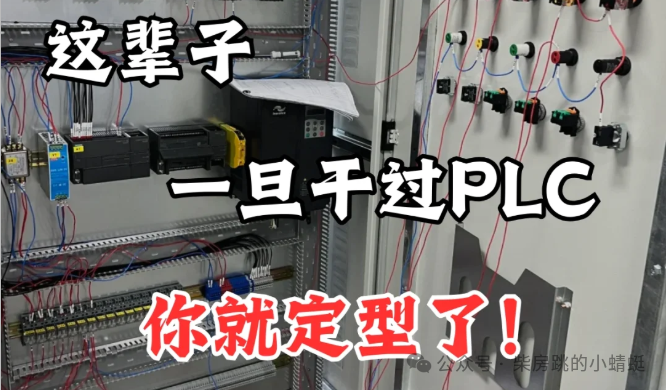

PLC LCD Display: Connect LCD Module in One Day for Clear Parameter Display
Want to quickly implement LCD display with PLC and make parameter presentation clear at a glance? This guide teaches you how to connect the LCD module to the PLC in just one day through simple steps, achieving intuitive and clear parameter display.
5 Major Challenges in PLC LCD Display
- Complex connection wiring, hard to start
- Complicated parameter configuration, prone to errors
- Poor display quality, not clear enough
- Data updates are not timely, with significant lag
- Difficult integration with PLC programs
🎯 Core Solution: Reasonable Wiring + Precise Configuration
Tools Required:
- ✅ PLC controller (supports LCD display expansion)
- ✅ LCD module (compatible model with PLC)
- ✅ Connection cables (ensure quality)
- ✅ Programming software (corresponding to PLC model)
Four Steps to Connect
▎ Stage One: Hardware Connection (Complete in 30 Minutes)
Wiring Planning
- Plan the connection wiring according to the PLC and LCD module manuals, ensuring the wiring is neat and orderly to avoid cross-interference.
- Connect the power lines, ensuring the PLC and LCD module are powered correctly, paying attention to the correct connection of positive and negative terminals.
Port Matching
- Connect the data line of the LCD module to the corresponding data port of the PLC, paying attention to the interface type and pin definitions.
- Connect control signal lines, such as RS232, RS485, etc., selecting the appropriate communication method based on actual needs.
Fixed Installation
- Secure the PLC and LCD module in a suitable position to avoid vibrations and displacements affecting connection stability.
▎ Stage Two: Parameter Configuration
Communication Parameter Settings
- Open the programming software and enter the PLC communication parameter settings interface.
- Set the baud rate, data bits, stop bits, and other parameters for communication with the LCD module, ensuring they match.
Display Parameter Adjustments
- Configure the number of display rows, columns, font size, and other parameters of the LCD module based on actual display needs.
- Set the refresh frequency of the display content to ensure timely data updates.
Pitfall Avoidance Tips:
- Carefully check communication parameters to avoid communication failures due to incorrect parameters.
- When adjusting display parameters, observe the display effect and make timely adjustments.
▎ Stage Three: Program Integration (Key Step)
Data Reading and Transmission
- Write data reading code in the PLC program to read the parameters to be displayed from sensors or other devices.
- Transmit the data to the LCD module via the communication protocol, ensuring data accuracy.
Display Logic Design
- Design the display logic, such as displaying parameters in a certain order or using different colors based on parameter values.
- Write programs to achieve dynamic displays, such as scrolling displays or flashing alerts.
Practical Tips:
- Preprocess data, such as unit conversion and data filtering, to improve display accuracy and readability.
- Write exception handling programs to provide timely alerts in case of data anomalies or communication failures.
▎ Stage Four: Display Optimization
Brightness and Contrast Adjustment
- Adjust the brightness and contrast of the LCD module based on the usage environment to ensure clear visibility.
- Automatic brightness adjustment can be implemented through the PLC program, adjusting display brightness based on changes in ambient light.
Color Matching Optimization
- Select appropriate color combinations to make the displayed content more eye-catching and aesthetically pleasing.
- For important parameters, use striking colors to draw the operator’s attention.
Multi-Scenario Parameter Library
| Application Scenario | Brightness Setting | Contrast Setting | Color Matching Suggestions |
|———|———|———|———|
| Bright Indoor Environment | 50% | 40% | Black background with white text |
| Dim Indoor Environment | 30% | 30% | Green background with white text |
| Outdoor Bright Light Environment | 80% | 50% | White background with black text |
Practical Case:
Industrial Automation Production Line Parameter Display:
- Real-time display of equipment operating speed, temperature, pressure, and other parameters, with timely and accurate data updates.
- When parameters exceed normal ranges, the display color changes to red and flashes to alert.
Smart Agriculture Greenhouse Environment Monitoring:
- Display environmental parameters such as temperature, humidity, and light intensity inside the greenhouse.
- Display different icons based on different parameter ranges, such as a flame icon for high temperatures.
Common Problem Rescue Tips
▎ Display Garbled?
- Check if the communication parameters are correct and reset them.
- Confirm if data transmission is correct, checking the data processing part in the PLC program.
▎ Display Incomplete?
- Check the display parameter settings of the LCD module and adjust the number of display rows and columns.
- Confirm if data is completely transmitted, checking the data reading and transmission program.
▎ Communication Interrupted?
- Check if the connection cables are loose and reconnect them.
- Check if the communication interfaces of the PLC and LCD module are damaged, replacing them promptly if damaged.
💻 Device Compatibility Solutions
| Device Type | Applicable PLC Model | Recommended LCD Module | Display Effect |
|———|————|————|———|
| Small Control System | S7-200 SMART | 1602 LCD Module | Clear and concise |
| Medium Automation Project | S7-1200 | 240128 LCD Module | Rich and diverse |
| Large Industrial Control | S7-300/400 | Color TFT LCD Module | High-definition and vibrant |
Choose devices wisely based on project requirements to ensure stable and reliable operation of the PLC LCD display system.
—— End ——